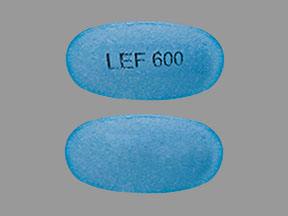Xenleta Dosage
Generic name: LEFAMULIN ACETATE 150mg in 15mL
Dosage form: injection, solution
Drug class: Miscellaneous antibiotics
Medically reviewed by Drugs.com. Last updated on Oct 11, 2024.
Recommended Dosage
For treatment of adults with CABP, the recommended dosage of XENLETA is described in Table 1 below. For patients with severe hepatic impairment, dosage adjustment is required.
|
*With the option to switch to XENLETA Tablets 600 mg every 12 hours to complete the treatment course. |
|
| Dosage | Treatment Duration |
| 150 mg every 12 hours by intravenous infusion over 60 minutes* | 5 to 7 days |
| 600 mg orally every 12 hours | 5 days |
Dosage Adjustment for Patients with Hepatic Impairment
Monitor patients with hepatic impairment for adverse reactions associated with XENLETA Injection and Tablets throughout the treatment period.
XENLETA Injection
Reduce the dosage of XENLETA Injection to 150 mg infused intravenously over 60 minutes every 24 hours for patients with severe hepatic impairment (Child-Pugh Class C). No dosage adjustment of XENLETA Injection is needed for patients with mild (Child-Pugh Class A) or moderate (Child-Pugh Class B) hepatic impairment.
XENLETA Tablets
XENLETA Tablets have not been studied in and are not recommended for patients with moderate (Child-Pugh Class B) or severe (Child-Pugh Class C) hepatic impairment. No dosage adjustment of XENLETA Tablets is needed for patients with mild hepatic impairment (Child-Pugh Class A).
Important Administration Instructions
XENLETA Injection
Administer XENLETA Injection by intravenous infusion over 60 minutes. Must dilute in a 250 mL solution of 10 mM citrate buffered 0.9% sodium chloride for injection supplied with XENLETA Injection before use.
XENLETA Tablets
Take XENLETA Tablets at least 1 hour before a meal or 2 hours after a meal. Swallow XENLETA Tablets whole with water (6 to 8 ounces). Do not crush or divide XENLETA Tablets.
Missed Dose
If a dose is missed, the patient should take the dose as soon as possible and anytime up to 8 hours prior to the next scheduled dose. If less than 8 hours remain before the next scheduled dose, do not take the missed dose, and resume dosing at the next scheduled dose.
Preparation of XENLETA Injection for Intravenous Infusion
- Dilute the entire 15 mL vial of XENLETA Injection into the diluent bag supplied with XENLETA injection that contains 250 mL of 10 mM citrate buffered 0.9% sodium chloride.
- Use aseptic technique when adding XENLETA Injection into the diluent bag. Mix thoroughly.
- Parenteral drug products should be inspected visually for particulate matter and discoloration prior to administration, whenever solution and container permit. Use the diluent bag only if the solution is clear and the container is undamaged.
- Do not use the diluent bag in series connections.
- Do not add other additives to the diluent bag because their compatibilities with XENLETA Injection have not been established.
More about Xenleta (lefamulin)
- Check interactions
- Compare alternatives
- Reviews (1)
- Drug images
- Side effects
- During pregnancy
- FDA approval history
- Drug class: miscellaneous antibiotics
- Breastfeeding
Patient resources
Professional resources
Related treatment guides
See also:
Further information
Always consult your healthcare provider to ensure the information displayed on this page applies to your personal circumstances.


